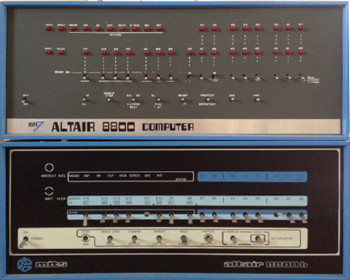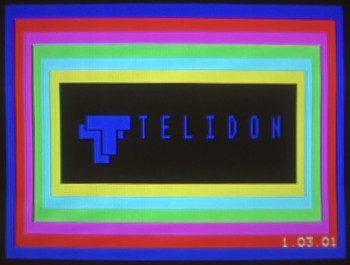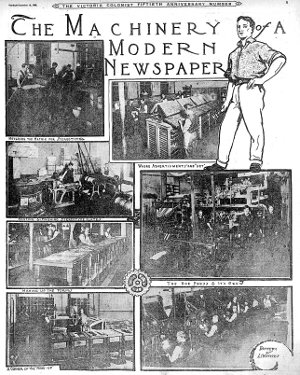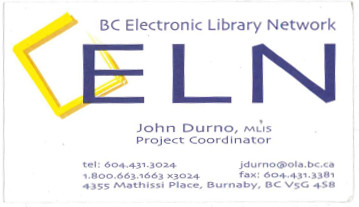Projects
Over the years I have had the good fortune to work on a number of interesting projects. The summaries here provide one way to trace the evolution of my career, from the operational problems I was working on in the late 90s and early oughts to the more research-focussed work I am doing now.
Historic computing (2016-present)

In the first half of 2016 I went on study leave to undertake a variety of interrelated projects with the shared goal of building the capacity to work productively with older computing media in our Archives. Initially my strategies were focussed on emulation and format migration, not period computing hardware, as I rather wished to avoid the challenges associated with maintaining decades-old computers. However, when I was offered a collection of older hardware, software and documentation from our Surplus warehouse I couldn't really turn it down. Since then, the collection has been augmented with a variety of finds from storerooms and labs around campus, as well as some pretty amazing community donations. Initially the collection had limited public exposure, but that began to change in August 2019 when we opened the Historic Computing Lab in the lower level of the Main Library. Over the years the Lab has supported a wide range of academic work including exhibitions, workshops, research projects, and data recovery.
Telidon art recovery (2015-present)

In 2015 I began a project to revive the digital artworks of the late Glenn Howarth. Howarth had been a painter for most of his career but spent a few years in the early 1980s creating computer art using a technology called Telidon. At the start of the project all we had were a few hundred cryptic files on floppy disks in our Archives, and by 2016 we were able to exhibit the fully restored works in the University's Legacy and Maltwood Galleries for an extended six-month run. The scope of the project expanded considerably when in late 2016 I began collaborating with a group of former Telidon artists to recover as much artwork created in this uniquely Canadian medium as possible, with the ultimate goal of creating a permanent web exhibition backed up with preservation storage. Of all the projects I've worked on to date, this is the one I am most proud of - so much so, in fact, that I have a whole page on this site dedicated to it, if you want to read more.
Colonist newspaper digitization (2007-2019)

I have been the technical lead on this project since the UVic Libraries began digitizing the 122 years of the Colonist newspaper back in 2007, with primary responsibility for getting it onto the web in some kind of organized and searchable presentation. Our approach was pretty basic compared to what other folks were doing with newspapers at the time but we had a minimal budget for software development and a lot more content than most. We used open source technologies like SOLR and PHP to build the search interface, and served up the content as downloadable PDFs. It wasn't perfect but it worked pretty well. In subsequent rounds we kept the search interface but moved the content to the Internet Archive. After we did the first 50 years (to 1910) the project went into hiatus for a while, but started back up again in 2012 and in the years following we scanned and uploaded a decade of newspapers per year. The final decade we had the rights for was 1971-1980 and we wrapped that up in early 2019. This project gets a lot of positive feedback from everyone from historians to grade school students, so I feel particularly privileged to have been so closely involved with it.
De-siloing Library Systems (2006-2009)
In 2006 I took over as Head of Library Systems at the University of Victoria. During the 1990s and through the first half of the oughts the Library, like many other departments on campus, had developed an in-house systems unit in order to move forward with technology deployments that were not yet available from the central IT group. Unfortunately there were problems with this approach: first, there was a lot of duplication of effort as each department rolled out its own mailserver, print servers, Active Directory, web servers, DHCP servers, and so on; and second we had few resources left over to deploy and manage other technologies that were key operational requirements of the Library, like a link resolver, metasearch engine (remember those?), or asset management systems for our various digital collections. Fortunately, around the time of my arrival on campus the central IT group began offering a much improved suite of services to departments, better in fact than anything we were resourced to provide in-house. Migrating all of our in-house deployments to central ones was itself a rather large undertaking, and although I can take some credit for overseeing the process a rather larger share goes to the technical staff in both Library Systems and University Systems who really did an incredible job of getting things moved over with minimal disruption to users. It was a big series of projects nevertheless, and took up a lot of my first three years at UVic.
Library consortia web site development (1998-2005)

with the ELN logo I designed
From 1998 through 2005 I was a Project Coordinator with the British Columbia Electronic Library Network (BC ELN), at that time a small (five person) office providing database licensing and resource sharing services to a province-wide consortium of post secondary libraries. Because we were so few in number I had a pretty big range of duties, from desktop computing support to negotiating research database licenses. My magnum opus however was the consortium web site, which I inherited from my predecessor as a collection of static HTML files and a Filemaker Pro contacts database, web-ified with Filemaker's proprietary CDML markup. By the time I left seven years later the web site (long since migrated to PHP/MySQL) handled pretty much all of the housekeeping for our operations, including billing, database trials and renewals, mailing list management, tracking of license terms and conditions, online document repository, intranet, even event registration. I just kept adding modules, building up most of an Electronic Resource Management System even before anyone knew what that was.
I felt a little bit sorry for the person who took it on after I left, since I was learning to program as I went along and the first modules I wrote definitely could have used a refactoring or two. That said, the site ran with few changes for about 10 years afterward, and its replacement still incorporates many of my design ideas so I'd say BC ELN got their money's worth. Upon request I sent zipped up bundles of the code to other library consortia and I believe a couple of them ran versions of it for a while. Up to 2019 Consortia Canada still ran a quick and dirty stripped-down version of my code, but that too has now been replaced. I am pleased to see that BC ELN is still using a version of the symbol I designed for them (see "big range of duties," above), a little gold rectangle turned on its corner that was intended to be a link in a chain but was referred to informally as "the ear ring".
Remote user authentication (1997-1998)
Providing access to remotely hosted research databases for off-campus users has been a solved problem for so long that it's sometimes surprising to recall there was a time when it wasn't. I got involved with it on my first real job as a Librarian at the Open Learning Agency, back when they were a distance education provider. It was a particularly pressing problem in that case, because as a distance education provider we had no on-campus students, which meant our licensed research databases were only really accessible to staff. As it turned out, solving the problem didn't require much heavy-lifting on the technology front (referring URL in those pre-EZproxy days) , but it did require seeking out the folks in the Agency responsible for providing our on-line courses and working with them to integrate the Library's user authentication requirements into their permissions database. This project meant a lot to me because it was the first time in my career I had identified an organizational problem of more than minor operational impact and taken the initiative to solve it without first being asked. It also was the first time I consciously employed a strategy that has served me well ever since, seeking out and partnering with other departments to achieve the desired end, rather than building competing services.
Last modified: June 26 2025 10:23:13.